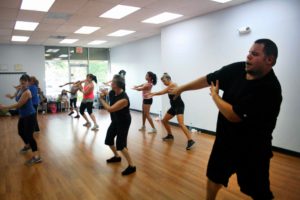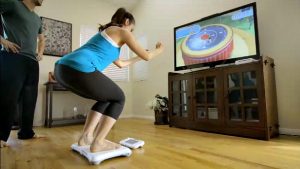According to the Heart and Stroke Foundation, adults should get at least 150 minutes of moderate to vigorous physical activity per week. That means getting active—in spurts of ten minutes or more—on most days of the week.
Not only can physical activity dramatically reduce stress levels, boost energy, and improve the quality of your sleep and digestion, it’s also good for your heart.
Exercise lowers your risk of cardiovascular diseases, including heart attack and stroke. It also helps to control or prevent most risk factors for heart disease—from type 2 diabetes, high cholesterol, and high blood pressure, to osteoporosis, obesity, and even certain types of cancer.
If you want to keep your heart healthy, try some of the following activities.
Get walking.
Walking is, by and large, the easiest way to exercise. Not only is it cheap—it doesn’t cost a thing—it’s easy to fit into your schedule, pleasant, and doesn’t pose many risks.
Take a walk around your block, meet a friend to walk and talk, go to a nearby park, or walk your dog. If finding the time poses a problem, use walking as a means of transportation by walking to work or walking to the grocery store.
Become a stairmaster.
You don’t need to go to the gym to reap the benefits of climbing stairs—if you have a staircase in your home, use that to get your heart rate up.
To make the best of the protective effects that exercise can have on your heart health, aim for 50-85% of your maximum heart rate. (To find your maximum heart rate, simply subtract your age from 220.)
Chances are, you’ll find that climbing stairs is a good way to get there. To calculate your heart rate, take your pulse for 15 seconds and multiply by 4. You’re within the right range if you can carry on a conversation without huffing and puffing.
Enjoy a bike ride.
Pumping the muscles in your legs is one of the best ways to get your heart working.
Whether you ride around your neighbourhood or your living room—on a stationary bike—cycling is a simple, low-impact exercise that most healthy adults can master.
If weather prevents you from getting outside, a stationary bike can come in handy.
Go for a dip.
If you’re worried about injuries, swimming is the perfect low-impact activity. It puts less stress on your joints and bones.
If you’re overweight or suffer from a joint condition such as arthritis, swimming is an especially low-risk way to start an exercise routine. Spending two and a half hours at the pool per week can give you all the heart health benefits you need.
Hit the elliptical machine.
Found in most gyms and fitness centres, elliptical training machines can help you to hit two birds with one stone—you’ll get an upper- and a lower-body workout at the same time.
An increasingly popular aerobic fitness option, elliptical machines mimic the motion of running outside or on a treadmill without giving your joints a hard time.
Like a treadmill, you can adjust the resistance and elevation of an elliptical trainer to increase your heart rate. The rhythmic, back-and-forth arm motions can also help you to get the blood flowing to your shoulders, arms, and upper back—areas that are easy to ignore.
Put on your dancing shoes.
Who ever said that exercise has to be boring? Get yourself a decent pair of shoes, find some space, and cue the music.
Dancing carries all the regular benefits of physical activity —from improving coordination and balance to boosting self-esteem.
But unlike other, more solitary activities, dancing may be an opportunity to socialize, whether you dance with a partner or in a group.
Try a Zumba class, sign up for dance lessons with a partner, or see whether your local community centre has any dance classes on offer. With a beat between 120 and 135 beats per minute, you’ll be tapping into all those heart benefits.
Try tai chi.
Tai chi is taking North America by storm. Given the many scientifically proven benefits of tai chi—including cardiovascular benefits—it’s hardly a surprise.
Though this ancient Chinese practice wasn’t designed to burn calories or even raise your heart rate, it does indeed have wide-ranging positive health effects, including mental health benefits, such as depression and anxiety.
A form of martial arts, some people liken tai chi to a kind of “moving meditation.” It’s a low-impact activity, and will also help to improve your circulation, leaving you feeling more energized.
Adopt an in-home exercise program.
Sometimes, finding the time to exercise means doing something that doesn’t require leaving your home.
When the weather is poor, or you don’t feel like going out of your way to the gym, choose something that you can do right in your own living room.
Today, you can watch Pilates, yoga, or other aerobic training programs online, following along in the comfort of your own home.
Wii Fit, an interactive video game which simulates boxing, tennis, and bowling can also help raise your heart rate. Wii also offers dance workouts!
Try a half an hour of moderate activity on days when rain or snow is preventing you from going outside, or you don’t feel like you have enough time to hit the gym or the pool.
Sign up for a water aerobics class.
Most community pools and swimming centres offer Aquafit classes. Much like swimming, water aerobics confers a wide-range of health benefits without putting pressure or stress on your joints, as other forms of activity will.
If you suffer from arthritis or are overweight, water aerobics is an ideal form of activity. There are classes for seniors or individuals living with chronic health conditions.
The information in this article should not be taken as professional medical advice. If you are having issues or have health-related concerns, you should see your personal physician.
This page is also available in:
![]() Français
Français





